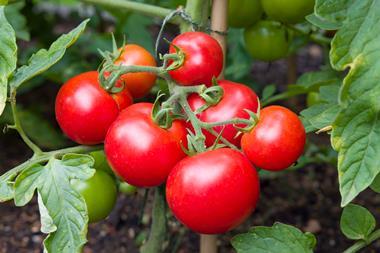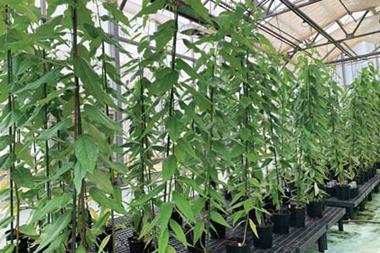The genome of the humble chicken has been edited to protect them from avian influenza. When the edited birds were then exposed to avian flu they were largely resistant to it, with nine in 10 birds uninfected. ‘This promises a new way to make permanent changes in the disease resistance of an animal,’ says Mike McGrew at the Roslin Institute, University of Edinburgh, who was involved in the research.
An H5N1 flu strain is currently killing huge numbers of wild birds across Asia, Europe and the Americas, as well as occasionally devastating farmed poultry and killing mammals. ‘There is a growing fear that bird flu could jump to humans and lead to another pandemic,’ says McGrew. A gene-editing strategy could both protect poultry and reduce the risk of bird flu spreading to poultry farmers and wild birds.
Currently, one of the best ways to protect poultry from catching avian flu is by keeping them under cover, away from wild birds that can transmit the disease. However, this isn’t ideal for the birds’ wellbeing. Vaccination is another possibility, but is challenging in terms of cost and practicality, and flu can mutate to evade vaccines.
Gene editing offers a new way to protect poultry and was achieved using Crispr–Cas9 to edit the gene that produces the protein ANP32A, as it is known to be hijacked by the virus to assist it in replicating. The edit changed two amino acids in the ANP32A protein so that a flu polymerase enzyme could no longer bind to it. Edited birds were mated to produce offspring that were resistant to the virus. These chickens showed no changes in growth, behaviour or health.
‘This strategy could be used not just for H5N1 bird flu, but for any of the strains, because it’s fundamental to the way that the virus works,’ said Wendy Barclay, a virologist at Imperial College London, speaking at a press briefing.
Her earlier studies identified the ANP32 protein family as essential for flu replication in human cells. Her group also previously reported that shorter human ANP32 proteins do not support bird flu well and the researchers hypothesised that changing these proteins in birds might protect against the virus.
The edit was not a complete success, however, as not every bird was protected against flu. It may be possible to make chickens resistant to the flu virus, but this will require more robust edits that completely stamp out viral replication, says Barclay. This was emphasised by the discovery of viral mutants that used related ANP32 proteins to continue replicating.
Disabling three ANP32 genes led to chicken cells that were completely resistant to the flu virus, but no birds have been bred with these changes yet.
A new English law in 2023 set out a regulatory path for gene-edited plants and animals, which would include flu-resistant poultry. Edited chickens are still some way from supermarket shelves, however.
‘The results here are really promising,’ says Richard Webby, an expert in influenza in animals and birds at St. Jude Children’s Research Hospital in Memphis, US. ‘This particular edited chicken is not ready for primetime, and there’s still a lot of research to do to see if the approach will work. But producing a flu-resistant chicken would be an incredible advance.’
‘From a public health perspective, anything we can do to reduce the contact of humans with these animal flu viruses is positive,’ he says.
Webby adds that it ‘is somewhat concerning that the virus mutated in ways that made it a little more adapted to mammal cells, but we probably could have predicted that based on the biology’.
The team says that pigs are another possible target for editing in flu resistance, as they have been linked to the emergence of flu pandemics such as in 2009. The researchers now plan to edit the remaining ANP32 genes in chickens to stop the proteins being hijacked by the flu virus.
References
A Idoko-Akoh et al, Nat. Commun., 2023, DOI: 10.1038/s41467-023-41476-3

















No comments yet